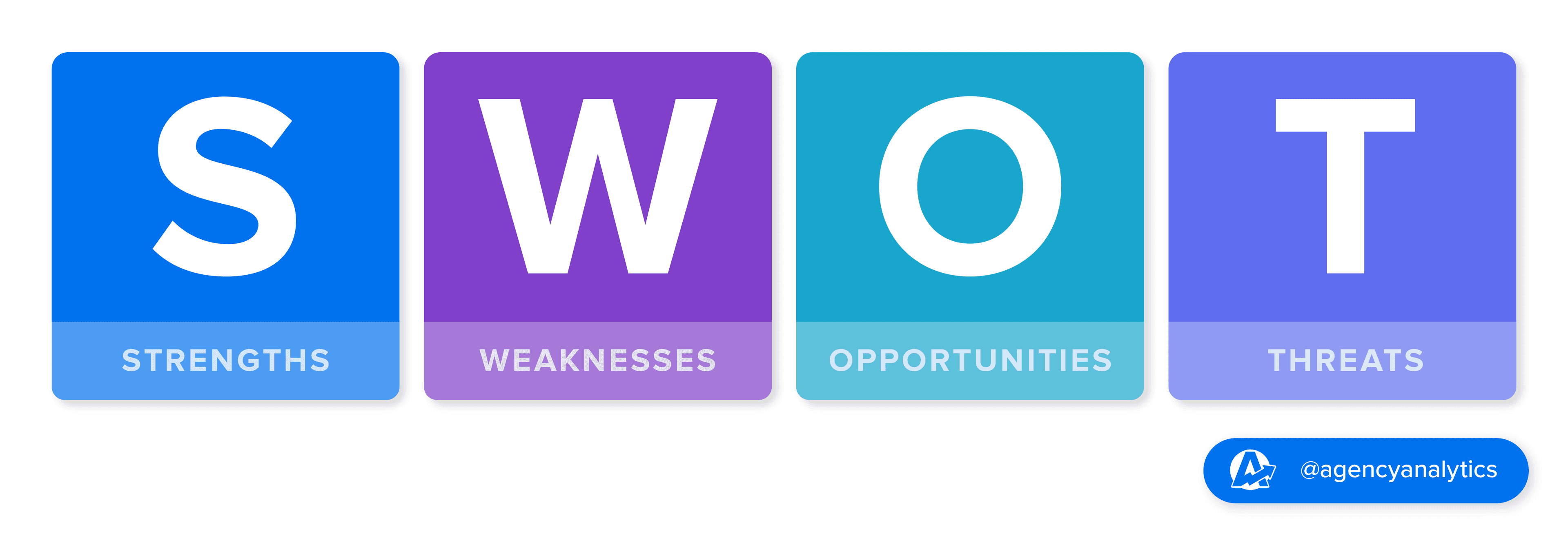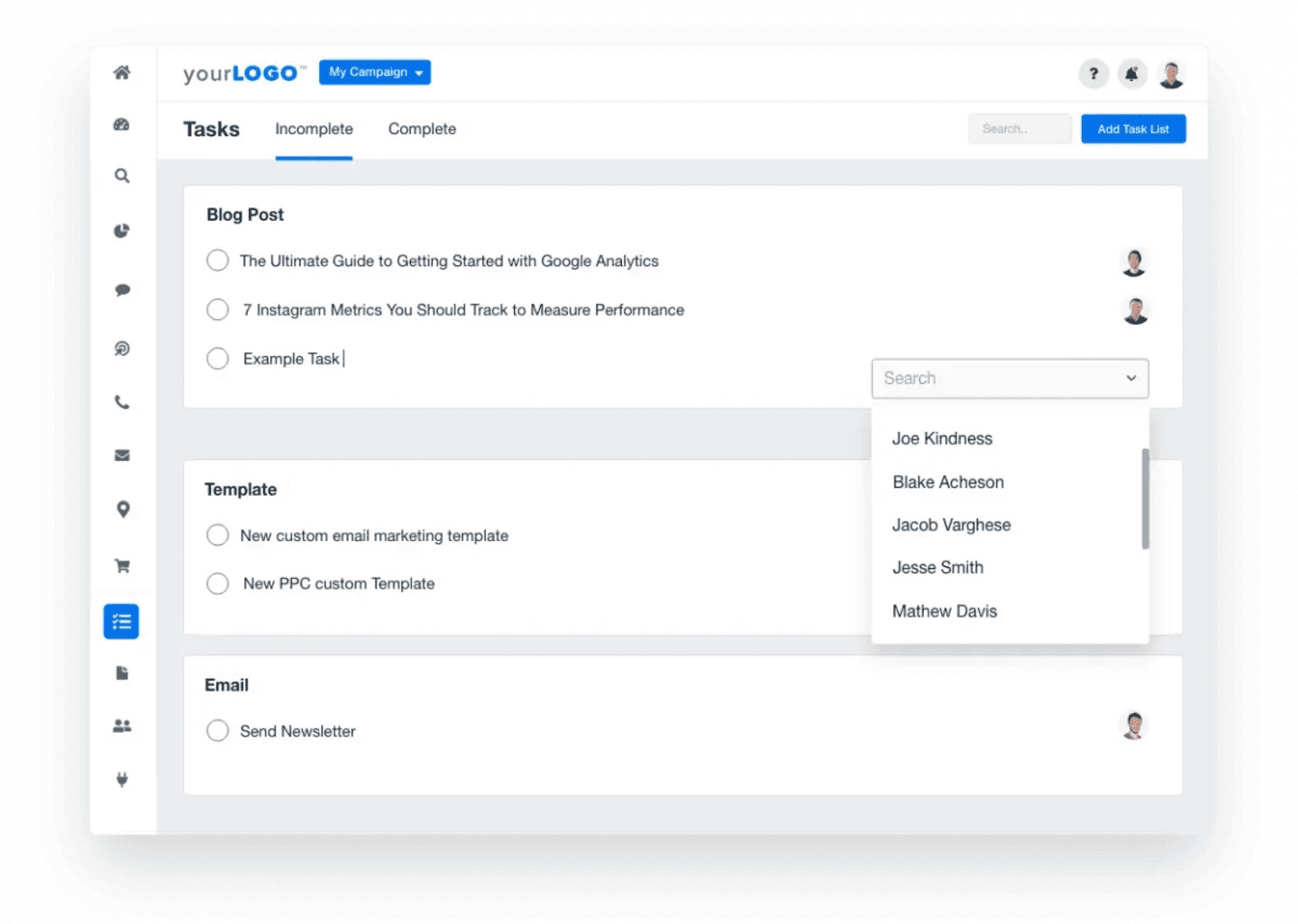Table of Contents
QUICK SUMMARY:
This article guides marketing agency leaders through creating a comprehensive five-year business plan. Discover why long-term planning is crucial for sustainable growth and the practical steps for building a plan that aligns with your agency’s mission, vision, and market goals. Explore key elements such as financial forecasting, market analysis, sales strategy, and setting measurable milestones with insights from industry experts. Plus, download our free template to get started today!
Creating a five-year business plan is essential for long-term success. However, while most agencies are familiar with traditional business plans focusing on immediate needs, many struggle to think beyond short-term goals.
While a typical business plan covers sales strategies or funding requirements, a comprehensive five-year plan gives you a clearer sense of direction, helps you stay ahead of market trends, and builds a sustainable future for your agency.
Building a five-year plan can be stressful—it holds up a mirror to the future state of your agency and your status as a business leader.
The planning experience can feel nerve-wracking, as so much can change in one year, let alone five.
Kayla Malss, Director, Allies Management
If the prospect of building a five-year plan makes you jittery, rest assured you’re not alone. Let’s explore why every marketing agency should create a five-year business plan, how to structure it, and best practices to ensure your plan is practical and flexible.
What Is a 5-Year Business Plan & Why Should Agencies Have One?
A five-year plan helps agencies project revenue targets, outline their business strategy, and prepare for potential risks and market shifts over the next five years. A detailed plan also gives your management team and staff members a clear sense of the company’s future, potential obstacles, and solutions.
More importantly, it serves as an executive summary for investors, business partners, and other stakeholders who want to see how your business grows over time, your revenue targets, and how your company plans to achieve these goals.
As an agency, we are often introduced to new opportunities that may take away from our initial focus or goals. It is important to assess if the opportunity falls in line with the current vision or if the vision needs to be adjusted. A five-year plan guides those assessments and helps avoid becoming distracted with opportunities that may have short-term benefit but take us off track.
Charlie Gray, Director of Product & Marketing Strategy, Custom Marketing Solutions
A five-year plan provides a roadmap for achieving a competitive advantage, growing your target audience, and meeting your financial goals. It outlines the milestones your agency intends to achieve, with enough flexibility to adapt to market shifts, new competitors, or evolving customer needs.
7 Steps to Craft a 5-Year Business Plan for Your Agency (Template)
Unlike a traditional business plan (or lean business plan) that focuses on the essentials, a strong five-year business plan requires strategic thinking to lay out a long-term strategy that helps you understand your market, clients, and goals.
Building a five-year business plan is closely tied to what Revenue Ranch founder Frank Cowell calls the “True North Strategy,” which acts as the compass through which every business decision will be made over a five-year period.
To define their True North and get the strategic planning process started, Frank has his clients go through an inventory exercise with a comprehensive questionnaire:
Why did you start the firm?
What are you personally really great at?
What is your firm great at?
What is your firm terrible at?
Who are you really great at serving?
If you could wave a magic wand, what would you be doing in the business?
If you could wave a magic wand, what would the business look like?
Your business strategy needs to be the True North for all other decision-making, whether at a macro or micro level.
Frank Cowell, Founder, Revenue Ranch
Having answered Frank’s questions, here’s a step-by-step guide to creating a five-year business plan that covers everything from market analysis to sales strategy:
1. Define Your Mission Statement and Vision
The foundation of any long-term business plan is a clear mission statement that defines your agency’s purpose and values. Your vision statement, on the other hand, is where you want the company to be in five years. Both are crucial in guiding your team through long-term planning and ensuring everyone is aligned on the direction your business is heading.
Example
Mission: To deliver personalized marketing strategies that drive measurable results for our clients.
Vision: To be recognized as the go-to digital marketing agency for innovative, growth-focused businesses by 2029.
We start with our personal five-year plan and work backward as to how we want to set up our business.
Kayla Malss, Director, Allies Management
2. Provide a Detailed Company Description
Craft a brief description of your agency, including your agency’s strengths and the unique features that set it apart from other businesses in the market. This section should also outline the core services you offer and how you intend to expand or adapt these services in the years ahead to meet your business’s goals.
Example
“Our agency specializes in SEO, paid media, and content marketing for SMBs in the ecommerce and tech sectors. Our focus on data-driven decision-making and client-specific strategies differentiates us from larger, more generalized agencies.”
3. Conduct Market Research and a SWOT Analysis
A strong five-year business plan includes a thorough market analysis that helps you understand where your agency stands compared to the competition. This involves identifying your target market, evaluating competitors, and assessing market trends that could impact your business.
Working in the digital space with small to medium businesses means trends and scopes can change rapidly, as well as client demand.
Kayla Malss, Director, Allies Management
Market analysis will inform your marketing plan, helping you position your agency strategically within the industry. Most businesses also include a SWOT analysis in their plan to help them identify their strengths and weaknesses, understand the competitive landscape, and explore potential growth opportunities.

Example
“The digital marketing industry is projected to grow by 12% annually over the next five years. Our target clients—small and medium-sized businesses—are increasingly shifting their marketing budgets toward digital channels. This provides a significant opportunity for us to capture market share by offering specialized services that cater to this segment.”
4. Draw a Financial Forecast
Long-term planning requires financial forecasting that includes revenue targets, projected expenses, and cash flow management. These projections will guide your agency’s investments, ensure long-term sustainability, and help attract potential investors. It’s important to revisit these projections periodically to adjust to changing market conditions and customer needs.
Example
“We anticipate a 20% increase in revenue each year, focusing on increasing client lifetime value through retainer contracts. We expect to generate $2 million in annual revenue by the fifth year with a 25% profit margin.”
5. Craft a Sales and Marketing Strategy
Your sales strategy should detail how you will generate revenue over the next five years. This can include plans for acquiring new clients, upselling existing customers, or expanding your service offerings.
A well-thought-out sales strategy helps you forecast potential revenue growth and stay on track toward your business goals. Consider how your marketing strategy might evolve over time as your agency grows, especially if you’re targeting different locations or new customer segments.
Example
“We plan to introduce AgencyAnalytics to help clients measure the success of their campaigns. We will increase client acquisition by leveraging referral partnerships, outbound sales efforts, and a comprehensive inbound marketing strategy. Additionally, we will develop thought leadership content to build authority in our niche and attract high-quality leads.”
6. Set Milestones & Key Metrics
Set specific milestones and KPIs to measure progress over the next five years. This could include revenue goals, new client acquisition targets, or product launches. These metrics will help you evaluate whether your agency is on track to meet its goals.
Example
By Year 1: Achieve 20% revenue growth.
By Year 3: Launch a new product offering and expand into two additional market verticals.
By Year 5: Secure $2 million in annual revenue and become a certified Google Premier Partner.
7. Outline How Your Agency Will Scale and Adapt
Long-term planning doesn’t mean being rigid. A successful five-year business plan should include operational strategies for scaling without sacrificing service quality. These strategies might involve adopting new technologies, expanding to different locations, or optimizing internal processes.
As your agency grows, so will your team. Your five-year business plan should include strategies for recruiting, developing, and retaining top talent. Set long-term goals for team expansion, skill development, and career progression to ensure your agency continues to thrive.
Example
“We plan to hire a Director of Operations and three additional account managers by Year 3 to support the expansion of our client base and ensure seamless service delivery.”
We always keep our plans flexible and open to change. Trends and client demands can shift rapidly, and it’s essential to be able to pivot when necessary.
Kayla Malss, Director, Allies Management
Looking to create a solid foundation for your agency’s future? Download our Free 5-Year Business Plan Template and get everything you need to map out your agency’s growth, set clear goals, and stay ahead of the competition. This easy-to-use template will help you organize your strategy, financial projections, and key milestones so you can focus on what matters—growing your agency. Start planning today!
Best Practices for “Walking the Talk” of Your 5-Year Plan
Creating a comprehensive 5-year business plan is a significant step, but the real challenge lies in executing that plan.
Here are some best practices for ensuring that your agency follows through and stays on track with its long-term business goals:
Regularly Review and Update the Plan
A five-year business plan isn’t something you write once and forget about. It requires regular updates and revisions as market trends, customer needs, and internal priorities evolve. Successful agencies review their plans periodically to ensure they are still relevant.
We strategize and add to our five-year plan each year during end-of-year strategy planning. The focus of the planning is based on the existing state of the business. Have we met our goals? What pivots have taken place?
Charlie Gray, Director of Product & Marketing Strategy, Custom Marketing Solutions
Make it a priority to review your business goals at least annually, adjusting financial projections, sales strategy, and operational plans to reflect the current business landscape.
Embed the Plan in Daily Operations
A five-year plan must be integrated into daily decision-making to be effective. Every major business decision should be evaluated against the plan to ensure alignment with long-term goals.
This way, you’ll ensure every step the agency takes is part of a broader strategy for growth and success.
We refer to our five-year plan a few times a month. When making strategic decisions like which clients we want to attract, which people we want to hire, and determining internal processes, we heavily rely on our five-year plan. It acts as our “True North.”
Kayla Malss, Director, Allies Management
Keep Your Team Aligned
For your agency to execute its five-year business plan effectively, the entire team must be on the same page. Communicate the plan clearly and frequently, and ensure every staff member understands their role in achieving the company’s long-term vision.
Involving team members in planning fosters buy-in and commitment to the agency’s long-term goals.
We present the plan to the team and open up discussion for feedback and questions so the team can understand their career progression within the business.
Kayla Malss, Director, Allies Management
Set Measurable Milestones and Track Progress
A good business plan includes long-term objectives and shorter-term milestones that allow you to measure progress. Establish key performance indicators (KPIs) that align with your five-year goals and track them consistently.
Whether you aim to hit specific revenue targets, acquire a certain number of clients, or expand to different locations, having measurable milestones ensures that you stay on track and can adjust your strategy when needed.

Turn data into stories that matter. Easily show client progress, highlight successes, and explain performance changes with AgencyAnalytics’ goal tracking and annotation tools. Start your free trial today!
Stay Flexible and Adapt To Change
Long-term planning is important, but it's just as crucial to regularly check in and see how things are going. A yearly review of the five-year plan might come too late to provide your agency with the operational agility to react to changing marketing realities, and monthly check-ins are excessive. A quarterly review hits the sweet spot, helping you stay flexible and adapt as market conditions, technology, and customer demands evolve.
Stay true to your client’s needs and what the market is asking for. Don’t force-feed clients services they don’t truly need. Continually identify their pain points and deliver a solution. You may be able to provide an immediate solution or a solution that may be applied within the five-year plan.
As an example, membership programs in the Home Service Industry have been stagnant since, well, forever. Our clients want better engagement and value from their membership programs but feel stuck. As we identified this pain point, we began looking for solutions that eventually tied into our overall five-year plan of new technology to develop.
Charlie Gray, Director of Product & Marketing Strategy, Custom Marketing Solutions
Hold Yourself Accountable
Finally, accountability is key to executing your five-year plan. Set regular check-ins with leadership and the broader team to assess your progress. Celebrate milestones achieved and address any gaps or obstacles preventing progress.
Accountability ensures that your business plan doesn’t just sit on a shelf—it must actively guide your agency’s growth.
We have underlying goals and initiatives supporting the main goal that we review and focus on consistently. This pushes us to ask the right question: “Does this action get us closer to the goal?”
Charlie Gray, Director of Product & Marketing Strategy, Custom Marketing Solutions
5 Common Mistakes to Avoid with a 5-Year Plan
While creating a 5-year business plan is a significant achievement, common pitfalls can prevent your agency from reaching its full potential. Avoiding the following mistakes will help you stay on track and ensure your plan is a living, adaptable tool rather than a static document.
1. Lack of Flexibility
One of the biggest mistakes agencies make is treating their five-year plan as though it’s set in stone. In a dynamic industry like marketing, staying rigid will cause you to miss out on new opportunities or fail to adjust to market changes.
2. Neglecting Long-Term Market Trends
Many agencies craft a five-year plan based on current market conditions but fail to anticipate longer-term shifts, which can result in goals misaligned with future realities.
Agencies should actively research and monitor trends—emerging technologies, evolving client expectations, or regulatory changes—that could impact their industry in the years ahead.
3. Failing To Adjust Financial Expectations
A common mistake is locking in financial projections early and failing to revisit them as the business grows. Without regularly updating these forecasts to reflect your agency’s actual performance and the broader economic context, your agency may face cash flow issues or miss investment opportunities.
4. Underestimating the Importance of Team Alignment
A well-crafted plan is only as strong as the team executing it. Some agencies overlook the need to involve staff in the plan’s development and implementation. This can lead to a disconnect between leadership’s vision and day-to-day operations.
When your team understands and buys into the long-term vision, they’re more likely to contribute actively to its success.

Help your account managers manage client campaigns effortlessly. Assign tasks directly within AgencyAnalytics’ client reporting platform and keep everything at their fingertips. Try it free for 14 days!
5. Ignoring the Need for Regular Checkpoints
Without regular check-ins, an agency risks drifting off course. Frequent reassessments are essential for ensuring the plan remains relevant and aligned with internal growth and external market factors.
Chart a Course for Long-Term Success
A five-year business plan serves as more than just a roadmap for your agency’s future—it’s a dynamic tool that, when used effectively, drives growth, aligns your team, and keeps you adaptable.
By starting with a clear mission and vision, outlining financial forecasts, setting measurable milestones, and engaging your team, you’re building a solid foundation for sustainable success. But remember, as both Kayla Malss and Charlie Gray emphasized, flexibility is key. The ability to pivot when market conditions shift or new opportunities arise will ensure your plan stays relevant and actionable.
If you’re not ready to dive into a full five-year plan, consider starting small with a one-page business plan and building from there. The important thing is to take that first step. Your agency’s future depends on it, and with the right plan in place, you’ll be prepared for whatever comes next.

Written by
Francois Marchand brings more than 20 years of experience in marketing, journalism, and content production. His goal is to equip agency leaders with innovative strategies and actionable advice to succeed in digital marketing, SaaS, and ecommerce.
Read more posts by Francois MarchandSee how 7,000+ marketing agencies help clients win
Free 14-day trial. No credit card required.






